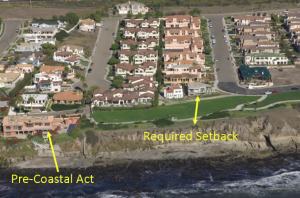Anyone who is considering developing, remodeling, or demolishing hotels, motels, or other visitor-serving lodging in the California coastal zone needs to be aware that these projects are likely to be receiving much greater scrutiny at the Coastal Commission.
California’s Coastal Act requires the Commission to protect, encourage, and, where feasible, provide “lower cost visitor and recreational facilities,” which includes lodging. However, under the Coastal Act the Commission cannot fix private overnight room rental rates or set income eligibility standards for overnight room rentals.
The Commission has been discussing ways to provide low-cost overnight accommodations in light of these limitations. The Commission is now approaching the issue with renewed emphasis due to the recent enactment of AB 2616. AB 2616 allows the Commission to consider environmental justice and “the equitable distribution of environmental benefits throughout the state when acting on a coastal development permit.” The new law defines “environmental justice” as “the fair treatment of people of all races, cultures, and incomes with respect to the development, adoption, implementation, and enforcement of environmental laws, regulations, and policies.”
Although AB 2616 takes effect on January 1, 2017, the Commission already is applying environmental justice principles with respect to lodging. At a recent workshop, the Commission’s staff presented preliminary recommendations to address low-cost overnight accommodations. While the Commission has not yet adopted any formal guidance, we expect the Commission will be using the principles discussed at the workshop in evaluating applications in the meantime.
There are some immediate implications that applicants need to plan for now:
First, the Commission is likely to scrutinize renovations and demolitions of existing lower-cost lodging much more closely. The Commission has seen examples of locally approved renovations of affordable accommodations that removed the units from the affordable category. The Commission is now aware of companies investing in that business model. We can expect the Commission to maintain that such upgrades require coastal development permits conditioned to address the anticipated loss of affordability. We also anticipate that the Commission will deny permits to demolish or repurpose affordable accommodations, unless replacement accommodations are first provided.
Second, we can expect that the Commission will require projects that are not affordable to provide onsite low and moderate-cost accommodations (such as camp sites, RV overnight facilities, and similar lower-cost classes of accommodations). We also expect the Commission to impose higher in-lieu fees on all classes of lodging projects and appreciably higher in-lieu fees on high-cost lodging projects, even where existing affordable accommodations have not been eliminated. The Commission’s data shows that fees collected to date have not been enough to create the affordable accommodations for which they were imposed.
Third, Commission staff’s preliminary recommendations emphasize consideration of a project’s affordability relative to the availability of affordable overnight accommodations in the vicinity of the project. The Commission and the State Coastal Conservancy are developing a database for this analysis. Applicants need to be prepared to address marketplace affordability and project economics before the Commission.
Fortune favors the prepared. That certainly will be the case when it comes to dealing with lodging in the coastal zone in the coming years.
 Lay of the Land
Lay of the Land









